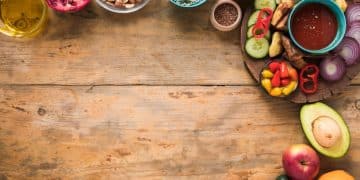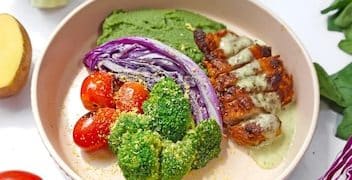Plant-Based Protein: Your Complete Guide to Meeting Nutritional Needs
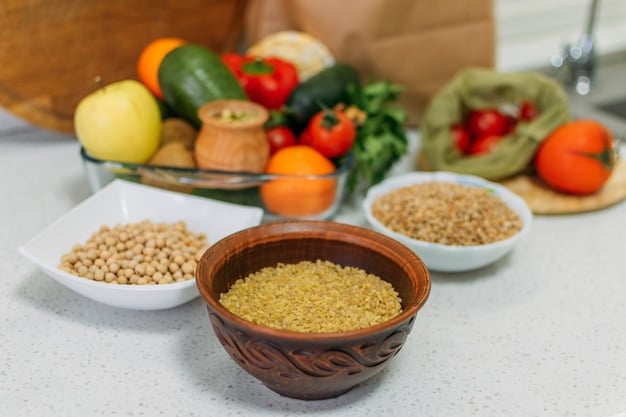
Plant-based protein sources are abundant and can easily meet your nutritional needs through a varied diet rich in legumes, grains, nuts, seeds, and vegetables, ensuring a balanced intake of essential amino acids and overall well-being without relying on meat.
Embarking on a plant-based diet doesn’t mean sacrificing your protein intake. The Complete Guide to Plant-Based Protein: Meeting Your Nutritional Needs Without Meat is here to show you how to thrive on plants, ensuring you get all the essential nutrients your body craves.
Understanding Plant-Based Protein
Plant-based protein is derived from sources like legumes, grains, nuts, and seeds, offering a sustainable and ethical alternative to animal products. It’s essential to understand how these sources contribute to a well-rounded diet.
Why Choose Plant-Based Protein?
Opting for plant-based protein can lead to numerous health benefits. These include lower risks of heart disease, type 2 diabetes, and certain cancers. Plant-based diets are often rich in fiber, vitamins, and minerals, promoting overall well-being.
Complete vs. Incomplete Proteins
Animal proteins are often labeled as “complete” because they contain all nine essential amino acids. However, many plant-based proteins are “incomplete,” meaning they lack one or more of these amino acids. By combining different plant-based foods, you can easily obtain all essential amino acids.
- Complementary Proteins: Combining foods like beans and rice creates a complete protein profile.
- Variety is Key: Eating a diverse range of plant-based foods throughout the day ensures balanced amino acid intake.
- Focus on Nutrient Density: Choose nutrient-rich plant-based proteins to maximize health benefits.
Transitioning to plant-based protein requires knowledge of the best sources and how to combine them effectively. This ensures that you are meeting all your nutritional needs without relying on meat.
Top Plant-Based Protein Sources
Many delicious and versatile plant-based foods pack a protein punch. Knowing which foods to prioritize can make meeting your protein needs easy and enjoyable.
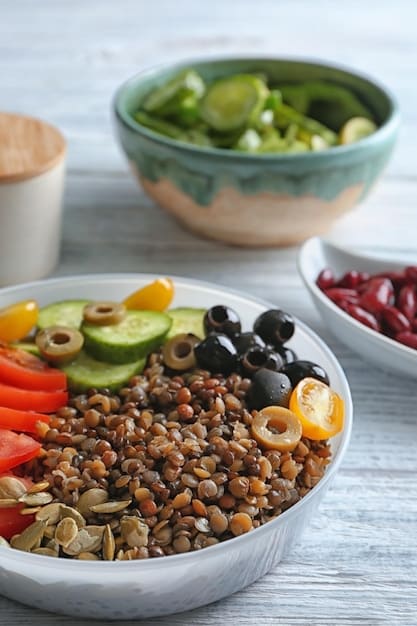
Legumes: The Protein Powerhouses
Legumes, including beans, lentils, and peas, are excellent sources of protein and fiber. They are also rich in iron, folate, and other essential nutrients.
Grains: Beyond Carbohydrates
Whole grains like quinoa, amaranth, and oats not only provide complex carbohydrates but also contribute significantly to your daily protein intake. Quinoa, for example, is a complete protein.
Nuts and Seeds: Healthy Fats and Protein
Nuts and seeds, such as almonds, chia seeds, and hemp seeds, offer a combination of healthy fats, protein, and fiber. They are perfect for snacking or adding to meals.
- Tofu and Tempeh: Made from soybeans, these are versatile and complete protein sources.
- Edamame: Young soybeans are a delicious and protein-rich snack.
- Spirulina: This blue-green algae is a complete protein and packed with nutrients.
Incorporating these diverse sources into your diet ensures you’re not only getting enough protein but also a wide range of other essential nutrients. Experiment with different foods to find your favorites.
Calculating Your Protein Needs
Determining your individual protein needs is crucial for maintaining optimal health on a plant-based diet. Several factors influence how much protein you should consume daily.
Factors Influencing Protein Requirements
Your age, sex, activity level, and overall health play significant roles in determining your protein needs. Athletes and pregnant women, for example, require more protein than sedentary individuals.
Recommended Daily Intake
The general recommendation is to consume 0.8 grams of protein per kilogram of body weight. However, this can vary based on individual circumstances. Consulting a registered dietitian can provide personalized guidance.
Using Online Calculators
Various online calculators can help you estimate your protein needs based on your specific profile. These tools consider factors like your weight, height, age, and activity level to provide a personalized recommendation.
Understanding how to calculate your protein needs empowers you to make informed choices about your diet. Regular adjustments may be necessary based on changes in your lifestyle and health.
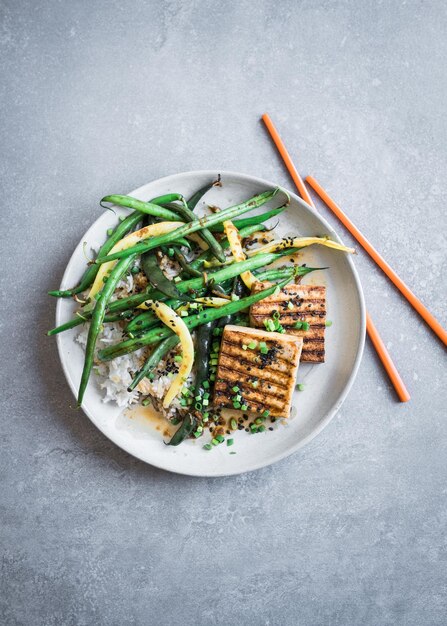
Creating Balanced Plant-Based Meals
Building balanced meals is essential for ensuring you get all the nutrients you need on a plant-based diet. Focusing on whole, unprocessed foods is the best approach.
Combining Complementary Proteins
Pairing incomplete proteins can create a complete protein profile. Examples include combining beans with grains or nuts with seeds. Planning your meals around these combinations can simplify your diet.
Sample Meal Plans
Creating a weekly meal plan can help you stay organized and ensure you’re getting a variety of nutrients. Include a mix of legumes, grains, vegetables, and fruits in your plan.
Snacking Smart
Opt for protein-rich snacks like nuts, seeds, or edamame to keep you feeling full and satisfied between meals. Avoid processed snacks that offer little nutritional value.
- Breakfast Ideas: Oatmeal with nuts and seeds, tofu scramble, or a protein-packed smoothie.
- Lunch Options: Lentil soup, quinoa salad, or a veggie wrap with hummus.
- Dinner Recipes: Black bean burgers, lentil loaf, or tofu stir-fry.
Designing balanced meals that incorporate a variety of plant-based protein sources is key to thriving on a vegan diet. With a little planning, it’s easy to create meals that are both nutritious and delicious.
Addressing Common Concerns
Many people have concerns about switching to a plant-based diet, particularly regarding protein intake. Addressing these concerns can help alleviate doubts and promote informed decision-making.
Will I Get Enough Protein?
With proper planning, it’s entirely possible to meet your protein needs on a plant-based diet. By focusing on protein-rich foods and combining complementary proteins, you can easily meet your daily requirements.
Is Plant-Based Protein as Good as Animal Protein?
Plant-based protein offers several advantages over animal protein, including lower saturated fat and higher fiber content. It’s also a more sustainable and ethical choice.
How Can I Increase My Protein Intake?
Adding protein-rich foods to every meal and snack can significantly increase your protein intake. Consider adding nuts, seeds, or legumes to your meals, or using protein powder in smoothies.
Addressing these concerns can help more people feel confident in adopting a plant-based diet. Remember, knowledge is power, and understanding your nutritional needs is essential for success.
Tips for Transitioning to Plant-Based Protein
Transitioning to a plant-based diet can be a gradual process. Here are some tips to make the switch easier and more enjoyable.
Start Slowly
Begin by incorporating one or two plant-based meals per week. Gradually increase the frequency as you become more comfortable with plant-based cooking and meal planning.
Experiment with Recipes
Explore different plant-based recipes to find dishes that you enjoy. There are countless resources available online and in cookbooks to help you create delicious and nutritious meals.
Read Labels Carefully
Pay attention to nutrition labels to ensure you’re getting enough protein and other essential nutrients. Look for foods that are high in protein, fiber, and vitamins.
- Join a Community: Connect with other plant-based eaters for support and inspiration.
- Consult a Professional: A registered dietitian can provide personalized guidance on meeting your nutritional needs.
- Be Patient: It takes time to adjust to a new way of eating, so be kind to yourself and celebrate your progress.
Transitioning to plant-based protein is a journey. With patience, experimentation, and support, you can make a successful and sustainable switch.
| Key Point | Brief Description |
|---|---|
| 🌱 Protein Sources | Legumes, grains, nuts, and seeds are great plant-based protein sources. |
| ⚖️ Protein Needs | Calculate daily protein needs based on weight, activity level, and health. |
| 🥗 Balanced Meals | Combine different plant-based proteins to create balanced meals. |
| 🤔 Addressing Concerns | It’s possible to meet protein needs on a plant-based diet with proper planning. |
Frequently Asked Questions
▼
Excellent plant-based protein sources include legumes like lentils and beans, grains such as quinoa, nuts and seeds like chia and hemp, and soy-based products like tofu and tempeh.
▼
The recommended daily intake is about 0.8 grams of protein per kilogram of body weight. This may vary based on activity level, age, and overall health. Consult a professional for personalized advice.
▼
Yes, by eating a varied diet that includes different plant-based proteins, such as combining legumes with grains, you can easily obtain all nine essential amino acids.
▼
Quick and easy plant-based meals include lentil soup, quinoa salad with vegetables, tofu stir-fry, and black bean burgers. Experiment with different combinations for variety.
▼
Absolutely. Many athletes thrive on plant-based diets. Just ensure you consume enough calories and focus on protein-rich foods to support your training and recovery needs.
Conclusion
Adopting a plant-based diet and getting enough plant-based protein to fulfill the need of proteins is entirely achievable with thoughtful planning and knowledge. By understanding your protein requirements, exploring diverse protein sources, and creating balanced meals, you can enjoy a healthy, sustainable, and delicious plant-based lifestyle.
